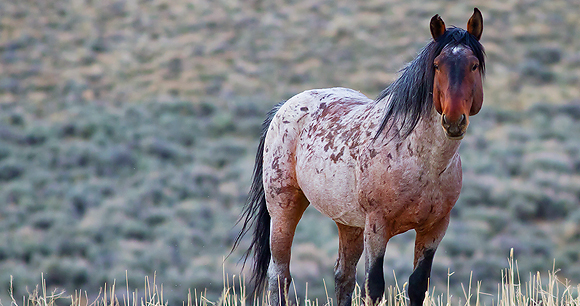
“Wild free-roaming horses and burros are living symbols of the historic and pioneer spirit of the West. … It is the policy of Congress that [they] shall be protected from capture, branding, harassment, or death; and to accomplish this they are to be considered in the area where presently found, as an integral part of the natural system of the public lands.”
These are the words Congress used to describe America’s wild horses and burros in the preamble to the Wild Free-Roaming Horses and Burros Act of 1971 (WFHBA). Sadly, this mandate has been largely ignored. The Bureau of Land Management’s Wild Horse and Burro Program and related federal land management policies are so flawed that the long-term survival of these animals is in serious jeopardy, as is the health of the public lands on which they reside.
For decades, America's wild horses have faced tremendous pressure from the government, ranchers, the livestock industry, state wildlife agencies, and others who do not support the protection of these iconic animals on western rangelands. As a result, hundreds of thousands of wild equines have been rounded up and removed from public lands. Most of the horses removed are held in barren government holding facilities, separated from their herds and costing taxpayers millions of dollars each year. Some populations and their herd areas have dramatically declined in number and size to the point that many herds are no longer self-sustaining and genetically viable. At the same time, livestock, which vastly outnumber horses and burros on the range, remain on these public lands causing serious environmental degradation.
Nonnative Nonsense
“The wild horse may in fact be an exotic species in Australia, New Zealand, and a few other locations around the world, but it is certainly not so in North America. Horses evolved on this continent only to later disappear, possibly at the hand of man. After what can only be viewed as seconds on the hands of evolution’s clock, the horse was returned by the same hand to resume its place among the same animals and plants with which it had evolved. To label the North American wild horse as an exotic ignores the facts of time and evolutionary history.”
–Into the Wind by Dr. Jay F. Kirkpatrick, 1994
The BLM and other federal or state agencies dealing with wildlife management In the United States often label the modern horse (Equus caballus) as a nonnative, exotic, or feral species. Neither paleontological opinion nor modern molecular genetics support the notion that horses are not native to America.
Today's wild horses are descendants of escaped or abandoned horses introduced to North America by Spanish conquistadors and settlers, beginning in 1519, after horses had disappeared from the North American continent a few thousand years earlier. Fossil evidence indicates horses evolved in North America to a form that is essentially like the wild horses of today. Labeling horses as nonnative is not scientific and serves merely as a convenient excuse for pushing wild horses aside in favor of competing commercial interests.
Solutions
The mandate of the Wild Free-Roaming Horses and Burros Act should be carried out. Wild horses need fewer removals, appropriate nonlethal management when management is required, and more freedom to roam their legal and traditional ranges. With the support of wild horse advocates, Congress has repeatedly directed the BLM to implement a robust fertility control plan to humanely manage wild horse herds, which the BLM has consistently ignored in favor of the roundup and removal status quo. For more on this issue and what steps the BLM should take to fulfill its obligations under the WFHBA, see AWI’s Managing for Extinction brochure. Take action to end inhumane helicopter roundups.